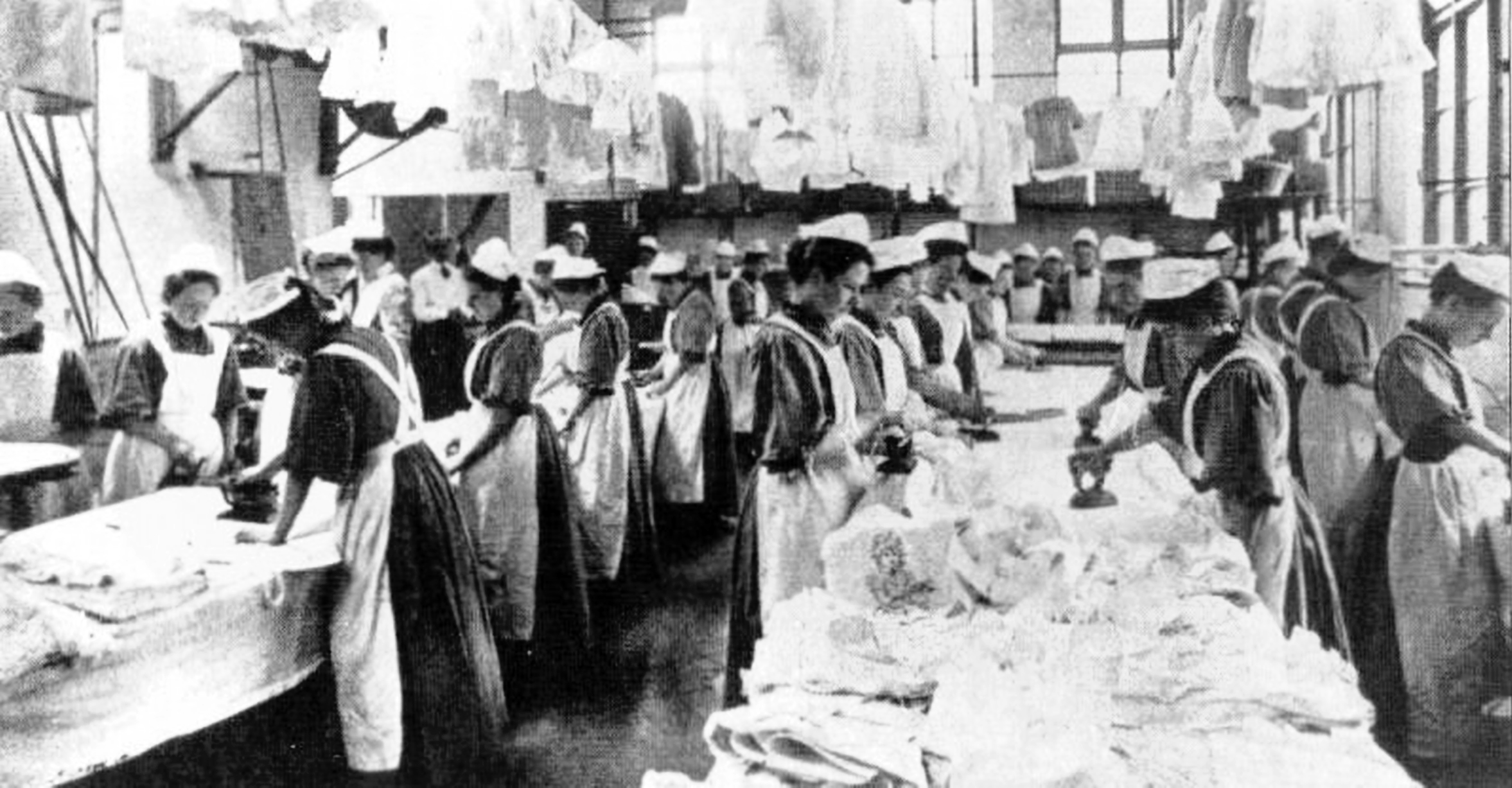"
Magdalene asylums were slave labor laundries from the 18th to the late-20th centuries ostensibly to house "fallen women", a term used to imply female sexual promiscuity. Asylums for such girls and women and others considered to be of poor moral character, such as prostitutes, operated throughout Europe and North America for much of the nineteenth and well into the twentieth century."
"Asylum records show that in the early history of the Magdalene movement, many women entered and left the institutions of their own accord, sometimes repeatedly. Lu Ann De Cunzo wrote in her book, Reform, Respite, Ritual: An Archaeology of Institutions; The Magdalene Society of Philadelphia, 1800-1850, that the women in Philadelphia's asylum "sought a refuge and a respite from disease, the prison or almshouse, unhappy family situations, abusive men and dire economic circumstances." Though the institutions were meant to be a refuge for women, some were subjected to physical, psychological, sexual and emotional abuse. Many women felt they needed the support of the institutions to survive,
since the sisters strove to make them feel that the reasons for their refuge were their own fault.According to historian, Frances Finnegan, because many had a background as prostitutes, inmates (who were called "children") were regarded as "in need of penitence," and until the 1970s were required to address all staff members as "mother" regardless of age. To enforce order and maintain a monastic atmosphere, the inmates were required to observe strict silence for much of the day, while corporal punishment was common.[page needed]
As the phenomenon became more widespread, it extended beyond prostitution to petty criminals, orphans, mentally retarded women and abused girls, despite popular perception unmarried pregnant women were typically not admitted.
Even young girls who were considered too promiscuous and flirtatious, or too beautiful, were sent to an asylum by their families. This paralleled the practice in state-run asylums in Britain and Ireland in the same period, where
many people with alleged "social dysfunction" were committed to asylums. Without a family member on the outside who could vouch for them, many incarcerated individuals stayed in the asylums for the rest of their lives, many taking religious vows."
"The existence of the Irish asylums was not well known until 1993 when an order of nuns, Sisters of Our Lady of Charity, in Dublin sold part of their convent to a real-estate developer.
The remains of 155 inmates who had been buried in unmarked graves on the property were exhumed and, except for one, cremated and reburied in a mass grave in Glasnevin Cemetery. This triggered a public scandal and became national news. In 1999, Mary Norris, Josephine McCarthy and Mary-Jo McDonagh, all asylum inmates, gave accounts of their treatment. The 1997 Channel 4 documentary Sex in a Cold Climate interviewed former inmates of Magdalene Asylums who testified to continued sexual, psychological and physical abuse while being isolated from the outside world for an indefinite amount of time. Allegations about the conditions in the convents and the treatment of the inmates were made into an award-winning 2002 film The Magdalene Sisters, written and directed by Peter Mullan."
http://en.wikipedia.org/wiki/Magdalene_asylum


